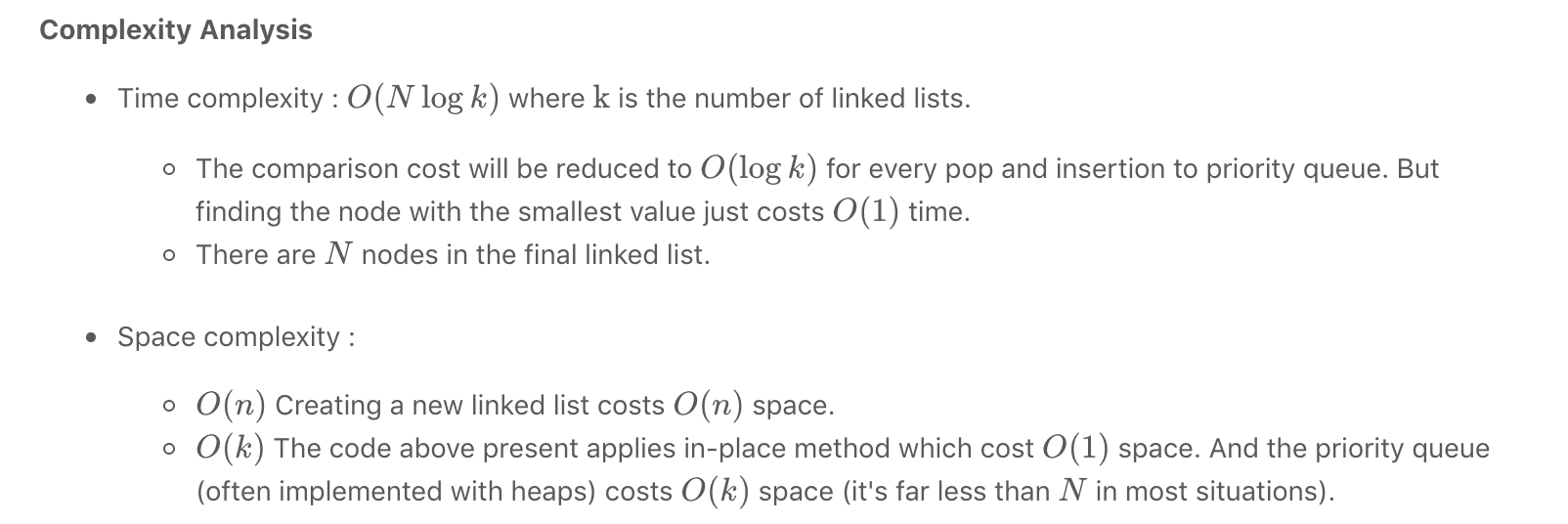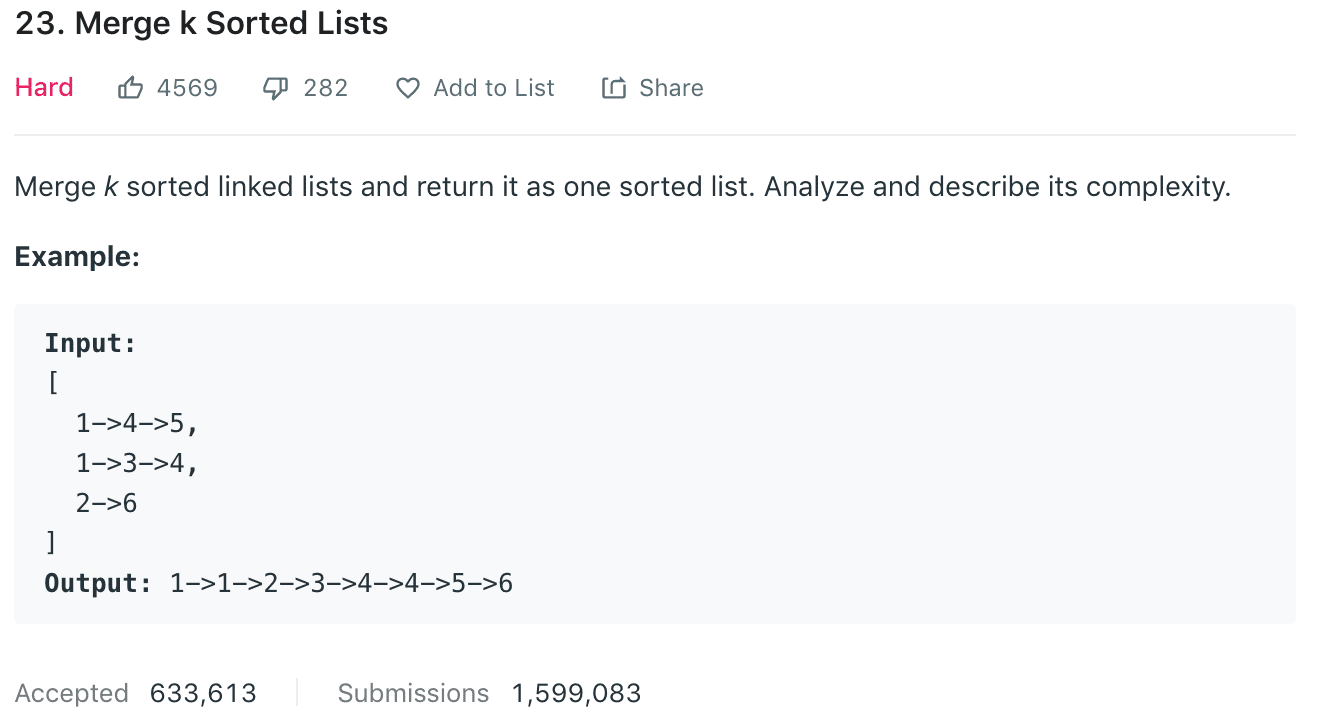Approach 1: Brute Force, Time complexity: O(NlogN) where NN is the total number of nodes.1
2
3
4
5
6
7
8
9
10
11
12
13
14
15
16
17
18
19
20
21
22
23
24
25
26
27/**
* Definition for singly-linked list.
* public class ListNode {
* int val;
* ListNode next;
* ListNode(int x) { val = x; }
* }
*/
class Solution {
public ListNode mergeKLists(ListNode[] lists) {
List<Integer> ls=new ArrayList();
for (ListNode node:lists){
while(node!=null){
ls.add(node.val);
node=node.next;
}
}
Collections.sort(ls);
ListNode dummyHead=new ListNode(-1);
ListNode ans=dummyHead;
for(int val:ls){
ans.next=new ListNode(val);
ans=ans.next;
}
return dummyHead.next;
}
}
Approach 2: Compare one by one, Time complexity: O(kN) where k is the number of linked lists1
2
3
4
5
6
7
8
9
10
11
12
13
14
15
16
17
18
19
20
21
22
23
24
25
26
27
28
29
30
31
32/**
* Definition for singly-linked list.
* public class ListNode {
* int val;
* ListNode next;
* ListNode(int x) { val = x; }
* }
*/
class Solution {
public ListNode mergeKLists(ListNode[] lists) {
ListNode head=new ListNode(-1);
ListNode dummy=head;
while(true){
int minVal=Integer.MAX_VALUE;
boolean isLoop=true;
int minIdx=-1;
for(int i=0;i<lists.length;i++){
if(lists[i]!=null && lists[i].val<=minVal){
minVal=lists[i].val;
minIdx=i;
isLoop=false;
}
}
if(isLoop) break;
dummy.next=lists[minIdx];
dummy=dummy.next;
lists[minIdx]=lists[minIdx].next;
}
return head.next;
}
}
Approach 3: Optimize Approach 2 by Priority Queue, Time complexity: O(Nlogk) where k is the number of linked lists. link1
2
3
4
5
6
7
8
9
10
11
12
13
14
15
16
17
18
19
20
21
22
23
24
25
26
27
28/**
* Definition for singly-linked list.
* public class ListNode {
* int val;
* ListNode next;
* ListNode() {}
* ListNode(int val) { this.val = val; }
* ListNode(int val, ListNode next) { this.val = val; this.next = next; }
* }
*/
class Solution {
public ListNode mergeKLists(ListNode[] lists) {
if(lists==null || lists.length==0) return null;
PriorityQueue<ListNode> pq=new PriorityQueue<>(lists.length,(a,b)->a.val-b.val);
for(ListNode node:lists){
if(node!=null) pq.offer(node);
}
ListNode preHead=new ListNode(-1),p=preHead;
while(!pq.isEmpty()){
p.next=pq.poll();
p=p.next;
if(p.next!=null) pq.offer(p.next);
}
return preHead.next;
}
}
Approach 4: Merge with Divide And Conquer, Time complexity: O(Nlogk) where k is the number of linked lists.1
2
3
4
5
6
7
8
9
10
11
12
13
14
15
16
17
18
19
20
21
22
23
24
25
26
27
28
29/**
* Definition for singly-linked list.
* public class ListNode {
* int val;
* ListNode next;
* ListNode(int x) { val = x; }
* }
*/
class Solution {
public ListNode mergeKLists(ListNode[] lists) {
return merge(lists,0,lists.length-1);
}
public ListNode merge(ListNode[] lists,int lo,int hi){
if(lo==hi) return lists[lo];
if(lo<hi){
int mid=(lo+hi)/2;
ListNode l1=merge(lists,lo,mid);
ListNode l2=merge(lists,mid+1,hi);
return mergeTwoLists(l1,l2);
}
return null;
}
public ListNode mergeTwoLists(ListNode l1,ListNode l2){
if(l1==null) return l2;
else if(l2==null) return l1;
if(l1.val<l2.val) {l1.next=mergeTwoLists(l1.next,l2);return l1;}
else {l2.next=mergeTwoLists(l1,l2.next);return l2;}
}
}
